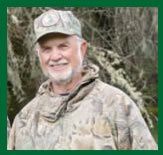Deer Zone Rundown — 2009
by Terry Knight
California hunters kick off their deer season on August 8 when the A zone opens. That’s followed by the B, C and D
 zones which, with a few exceptions, opens on Sept. 19. The X zone openers range from Sept 19 to Oct. 3.
zones which, with a few exceptions, opens on Sept. 19. The X zone openers range from Sept 19 to Oct. 3.
According to Department of Fish and Game (DFG) sources, hunters can expect a season similar to last year where the hunter success ranged from as high as 55 percent in X3A to as low as 5 percent in D15.
Here is a rundown of the deer zones:
A-zone; Searing temperatures and dry conditions will greet California deer hunters for the opening of Zone A coastal deer season. That’s the bad news. The good news is that deer herd is holding its own. Last year hunters averaged a 26 percent success rate with the best hunting in the northern section of the A zone. Here, the deer numbers are actually increasing in some areas according to the DFG.
This is the largest deer zone in the state, stretching from Willits in the north to Los Angeles in the south. With a few exceptions the best hunting is the northern section of the A zone. Counties like Sonoma, Mendocino and Lake have a stable deer population and despite the drought there is sufficient water and food.
As you go farther south the deer herds have been suffering from very dry conditions and loss of habitat which makes for fewer legal bucks.
The B zones are the one bright spot for California deer hunters. This year there is plenty of water and the herd is in good shape and even increasing. If I was allowed only one deer tag, I would choose a B zone tag. Last year, hunters enjoyed a 19 percent success rate.
Northern Lake and Mendocino counties hold some monster blacktail bucks and one of the top areas is near Covelo. Every year bucks that will have16 to 20 inch racks are taken from this area.
Along with your decoys and other gear, carry a piece of camo cloth to cover your blind. After a couple of weeks most of the blinds have very little natural cover left.
Early in the season, the bucks will be at the higher elevations, but with the first rain they will head downhill to their wintering grounds. If I only had one week to hunt then I would pick the final week of the season. Not only will the deer be on the move, the does will be going into rut and bucks will chasing them. Plus, the weather will be cooler making hunting more comfortable.
Hunters who opt for a C Zone tag are hoping for early storms to get the deer on the their migration path which will up the success rate. The C zones are special draw units and stretch from Butte County to the Oregon border. Overall, the DFG predicts the hunter success will be similar to last year where there was a roughly 18 percent success rate.
Swinging over the D zones, the hunter success will vary from as high as 17 percent (D16) down to 5 percent (D16). The D3 zone will offer some of the best hunting. As in many of the zones, weather will play a critical role in hunter success.
For the hunters who lucked out and drew one of the coveted X zone tags the chances of bagging a trophy mule deer buck are good. For example the success rate in 2008 for those drawing an X6A tag was 48 percent.
Like all deer hunting in California, it’s the story of the hunters who do their home work who will end up having a better chance of bagging their buck.
If you’re hunting a new ranch then use the first two days of your hunt to familiarize yourself with every square foot of the place. You should be able to locate the area you plan on hunting in the dark. Many hunters wander on a new area and just start hunting. If they haven’t jumped a buck by 10 a.m. they get discouraged and go home and say the area has little or no deer. You should plan on hunting most of the day, not just a few hours in the morning.
The other critical factor is the time of the year that you plan to hunt. The opening weekend always draws the bulk of the hunters, but is normally the worst time to hunt. Plan on doing most of your hunting the last two weeks of the season.
Weather is another major factor. If a storm hits, even a minor one, the hunting can change dramatically. Bad weather always puts deer on the move, especially the bucks. Instead of bedding down early, they will be out feeding most of the day. That’s when you should be hunting.
Deer hunting is much more than just shooting a buck. It should be a total experience of camping, enjoying the woods and companionship of your fellow hunters. Bagging a buck is the bonus.
